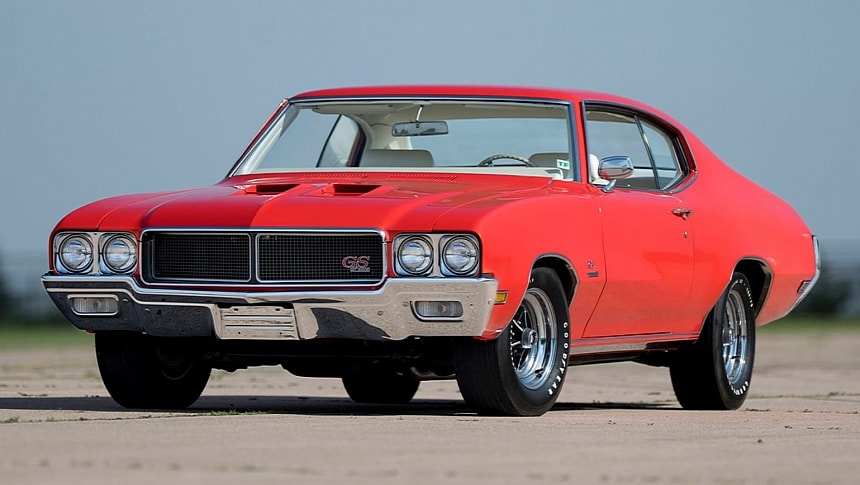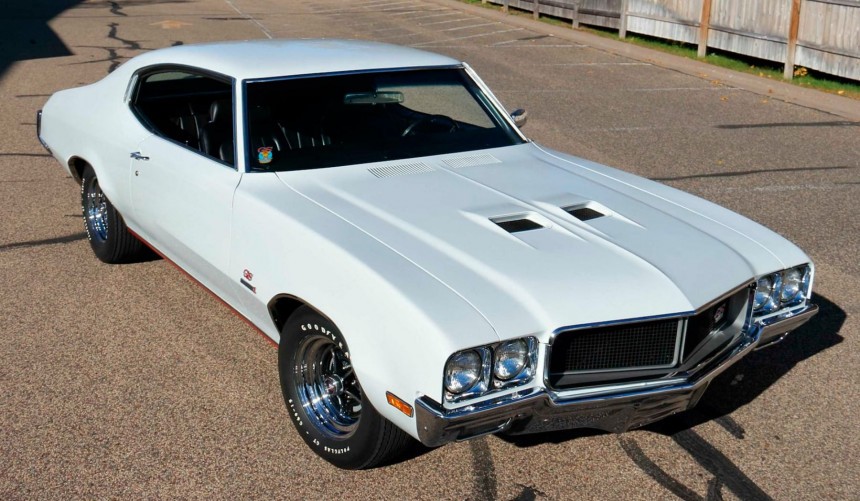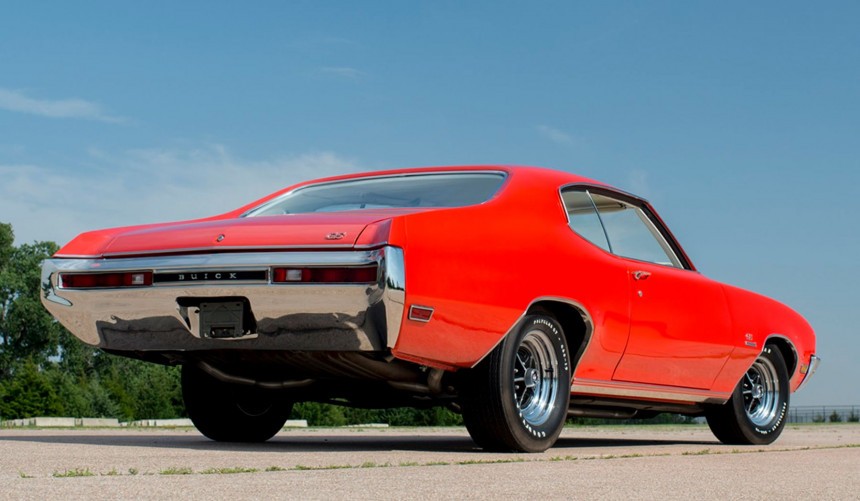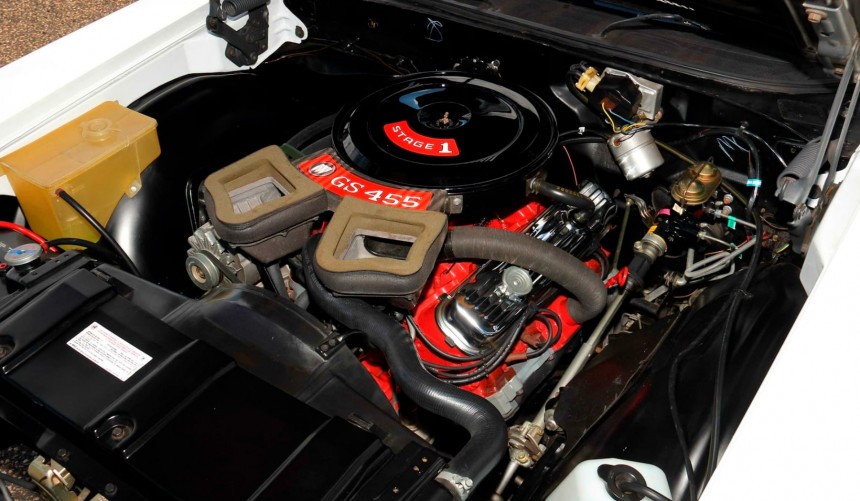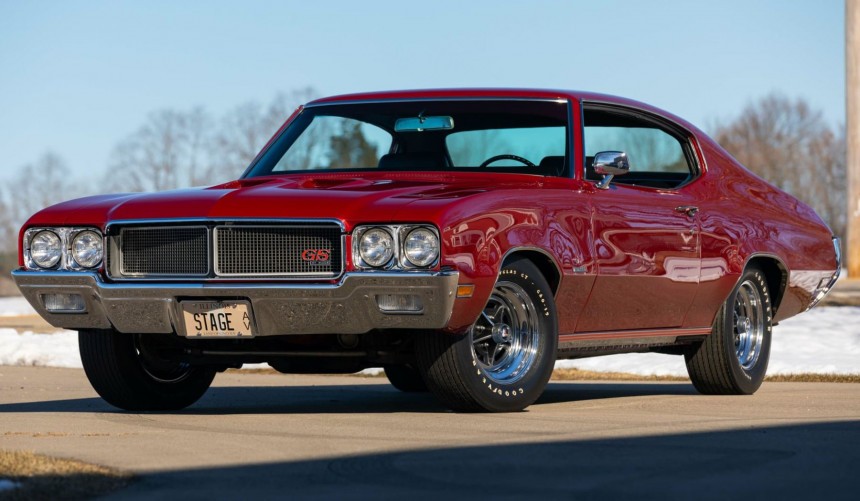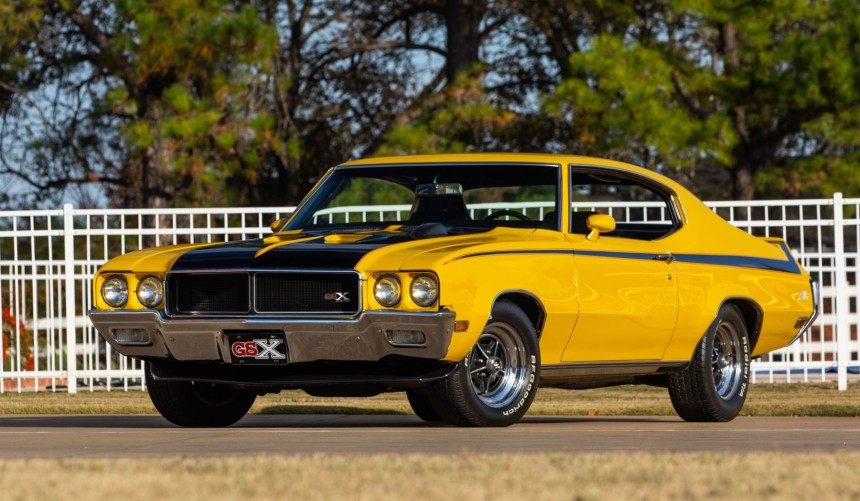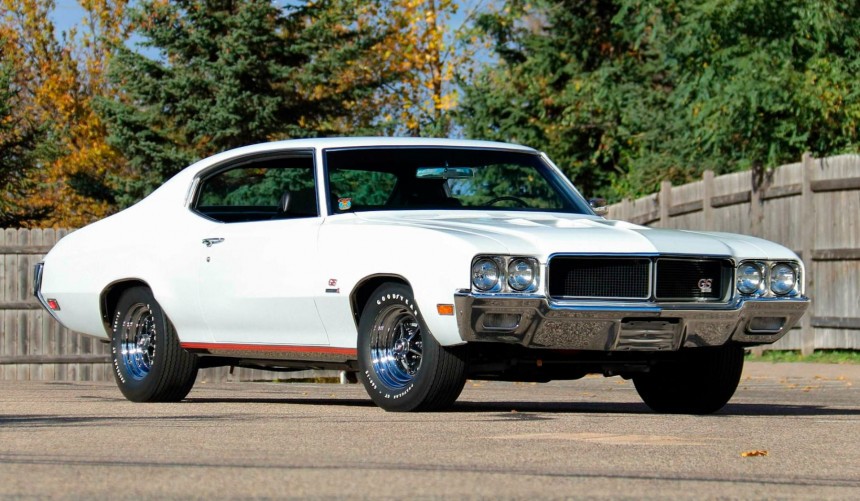During the pinnacle of the muscle car golden age, the GS Stage 1 was the fourth quickest factory-built performance ride over a quarter mile, the undisputable torque king, and the best-handling high-powered intermediate that roamed on American roads.
During its history, Buick has established itself by developing some of America's finest upscale, near-luxury passenger cars.
However, during brief periods, the GM division made successful incursions into the high-performance segment.
The first such incursion led to the 1936 Buick Century, which marked the first time when a potent V8 engine was transplanted from a full-size model to an intermediate.
The Century helped revive interest in Buick's products, and today, it's widely considered the grandfather of the muscle car.
After discontinuing the Century in 1942, the division went back to its upscale ways, but shortly after GM stablemates Pontiac released the GTO in 1964, Buick decided to put performance on the menu once again.
Released during the second part of the 1965 model year, the Gran Sport option turned the two-door Skylark into a veritable GTO challenger. But, while it never managed to outsell the highly popular Pontiac, the 1965 Gran Sport laid the foundation for a high-performance program that culminated with the 1970 GS Stage 1.
During the golden age of muscle, Buick advertised its performance-oriented offerings under the slogan "Fast with Class," and the 1970 Gran Sport became the ultimate embodiment of that slogan.
In terms of class, the new GS, as well as the entire second-generation Skylark lineup, received a comprehensive makeover that smoothed out the overall look.
Gone were the sweep-spear body line, the fender vent ports, and the recessed rear bumper of old, making way for a more streamlined body that made the GS classier than ever before.
Inside, Buick's typical upscale focus distinguished the GS from most of its rivals. The model was decked out with high-quality vinyl, plush carpeting, chrome-trimmed square gauges, or an optional tri-spoke racing-style steering wheel.
Based on the A-body platform shared with high-powered intermediate siblings like the Pontiac GTO, Chevrolet Chevelle, or Oldsmobile 4-4-2, the 1970 GS came with the F41 heavy-duty suspension package.
While all A-body heavy-hitters came with this suspension package that included stiffer springs, firmer shocks, and thicker anti-roll bars, each division used slightly different rates and geometry setups.
Compared to its siblings and rivals, the 1970 GS offered the best, most comprehensive suspension setup. It featured high-rate springs, sturdier shocks, a larger-diameter front anti-roll bar backed up by a rear anti-roll bar (optional on Skylarks), boxed lower rear control arms, rear frame stiffeners, and relocated rear-end axle snubbers.
All that extra hardware plus the near-flawless geometry made the 1970 GS one of, if not the best-handling high-performance intermedia of the era, a quality often overlooked by enthusiasts who were too focused on output ratings and quarter-mile times.
During the 1960s, GM banned the use of V8s with displacements over 400 ci (6.55 liters) in the corporation's intermediates. When Buick introduced the first Gran Sport, it equipped it with a 401-ci (6.57-liter) "nailhead" V8, but to go around the ban, the division simply marketed the V8 as a 400.
From 1967 onwards, Buick made the switch to an all-new big-block V8 that actually displaced 400 ci (6.55 liters), but the big news for 1970 was the repeal of the 400-ci limit, which meant GM divisions were free to go all-out on the big block front.
Thus, for the first time in model history, the GS came with a 455-ci (7.5-liter) powerhouse. Based on the 1967-1969 400, the new big block was rated at 350 hp and a whopping 510 lb-ft (691 Nm) of torque.
The latter figure made Buick's 455 the torquiest factory-built motor available at the time. Even more impressive, the figure was not surpassed by an American production engine until the Dodge Viper was introduced in 1992.
Peak performance got even better with the optional Stage 1 package, which added redesigned cylinder heads and a hotter cam, among others.
On paper, the gain was only 10 hp, but in reality, the Stage 1-equipped 455 made about 420 hp (gross).
The 1970 model year was the peak of factory performance and, thus, the most epic of the muscle car golden age.
Equipped with insanely powerful big-block V8s, all flagship performance models were blistering fast over the quarter mile straight off the dealership floor.
Though Buick didn't prioritize performance, its 455 Stage 1-equipped GS could run the quarter mile in 13.38 seconds, according to a test published by Motor Trend magazine in its January 1970 issue.
Only the Hemi 'Cuda, the Hemi Road Runner, and the Chevelle SS 454 LS6 were quicker, but the difference was just a few tenths of a second.
Apart from the GS 455, which, for some enthusiasts, was the ultimate gentleman's muscle car, Buick also introduced the GSX on its list of 1970 performance weapons.
Apart from the exclusive decal package and the bright paint colors available, the GSX was identical to the standard GS.
Think of it as a flashier Gran Sport conceived to attract the younger demographic who was drawn to Mopar's High-Impact colors and aggressive decals.
When equipped with all the right options, like the Stage 1 package, the 1970 GS became more expensive than its rivals, mainly the Chevelle SS.
The higher price, combined with the lower output (at least on paper), made it less popular among enthusiasts, so the sales figures weren't particularly impressive.
When the model year concluded, Buick sold 10,148 hardtop and convertible GS 455s (including GSXs). Of those, only 2,697 were equipped with the Stage 1 package.
These days, finding a highly original, fully restored 1970 GS 455 Stage 1 is no easy feat since very few have survived.
When one does pop up at an auction, it demands between $70,000 and $100,000, depending on the options and history. Of course, there are exceptions that go for even more, like the white example shown above, which fetched no less than $209,000 at a Mecum Kissimmee auction in 2023.
Values aside, the 1970 GS 455 Stage 1 remains one of the timeless icons of the muscle car golden age.
Along with the 1987 GNX, it's also one of the greatest muscle cars that Buick has ever produced.
For a virtual tour of this legendary ride, we recommend watching the YouTube video below by Lou Costabile.
However, during brief periods, the GM division made successful incursions into the high-performance segment.
The first such incursion led to the 1936 Buick Century, which marked the first time when a potent V8 engine was transplanted from a full-size model to an intermediate.
The Century helped revive interest in Buick's products, and today, it's widely considered the grandfather of the muscle car.
After discontinuing the Century in 1942, the division went back to its upscale ways, but shortly after GM stablemates Pontiac released the GTO in 1964, Buick decided to put performance on the menu once again.
Released during the second part of the 1965 model year, the Gran Sport option turned the two-door Skylark into a veritable GTO challenger. But, while it never managed to outsell the highly popular Pontiac, the 1965 Gran Sport laid the foundation for a high-performance program that culminated with the 1970 GS Stage 1.
Fast with class
In terms of class, the new GS, as well as the entire second-generation Skylark lineup, received a comprehensive makeover that smoothed out the overall look.
Gone were the sweep-spear body line, the fender vent ports, and the recessed rear bumper of old, making way for a more streamlined body that made the GS classier than ever before.
Inside, Buick's typical upscale focus distinguished the GS from most of its rivals. The model was decked out with high-quality vinyl, plush carpeting, chrome-trimmed square gauges, or an optional tri-spoke racing-style steering wheel.
One of the best-handling muscle cars of the era
While all A-body heavy-hitters came with this suspension package that included stiffer springs, firmer shocks, and thicker anti-roll bars, each division used slightly different rates and geometry setups.
Compared to its siblings and rivals, the 1970 GS offered the best, most comprehensive suspension setup. It featured high-rate springs, sturdier shocks, a larger-diameter front anti-roll bar backed up by a rear anti-roll bar (optional on Skylarks), boxed lower rear control arms, rear frame stiffeners, and relocated rear-end axle snubbers.
All that extra hardware plus the near-flawless geometry made the 1970 GS one of, if not the best-handling high-performance intermedia of the era, a quality often overlooked by enthusiasts who were too focused on output ratings and quarter-mile times.
Powered by the grossly-underrated torque king of muscle car V8s
From 1967 onwards, Buick made the switch to an all-new big-block V8 that actually displaced 400 ci (6.55 liters), but the big news for 1970 was the repeal of the 400-ci limit, which meant GM divisions were free to go all-out on the big block front.
Thus, for the first time in model history, the GS came with a 455-ci (7.5-liter) powerhouse. Based on the 1967-1969 400, the new big block was rated at 350 hp and a whopping 510 lb-ft (691 Nm) of torque.
The latter figure made Buick's 455 the torquiest factory-built motor available at the time. Even more impressive, the figure was not surpassed by an American production engine until the Dodge Viper was introduced in 1992.
Peak performance got even better with the optional Stage 1 package, which added redesigned cylinder heads and a hotter cam, among others.
On paper, the gain was only 10 hp, but in reality, the Stage 1-equipped 455 made about 420 hp (gross).
The fourth quickest muscle car of 1970 over the quarter mile
Equipped with insanely powerful big-block V8s, all flagship performance models were blistering fast over the quarter mile straight off the dealership floor.
Though Buick didn't prioritize performance, its 455 Stage 1-equipped GS could run the quarter mile in 13.38 seconds, according to a test published by Motor Trend magazine in its January 1970 issue.
Only the Hemi 'Cuda, the Hemi Road Runner, and the Chevelle SS 454 LS6 were quicker, but the difference was just a few tenths of a second.
The GSX
Apart from the exclusive decal package and the bright paint colors available, the GSX was identical to the standard GS.
Think of it as a flashier Gran Sport conceived to attract the younger demographic who was drawn to Mopar's High-Impact colors and aggressive decals.
The 1970 GS 455 Stage 1 today
The higher price, combined with the lower output (at least on paper), made it less popular among enthusiasts, so the sales figures weren't particularly impressive.
When the model year concluded, Buick sold 10,148 hardtop and convertible GS 455s (including GSXs). Of those, only 2,697 were equipped with the Stage 1 package.
These days, finding a highly original, fully restored 1970 GS 455 Stage 1 is no easy feat since very few have survived.
When one does pop up at an auction, it demands between $70,000 and $100,000, depending on the options and history. Of course, there are exceptions that go for even more, like the white example shown above, which fetched no less than $209,000 at a Mecum Kissimmee auction in 2023.
Values aside, the 1970 GS 455 Stage 1 remains one of the timeless icons of the muscle car golden age.
Along with the 1987 GNX, it's also one of the greatest muscle cars that Buick has ever produced.
For a virtual tour of this legendary ride, we recommend watching the YouTube video below by Lou Costabile.
